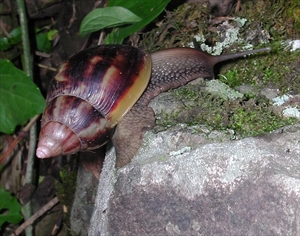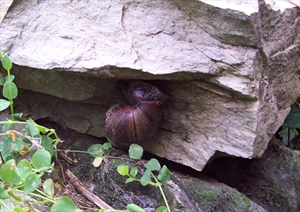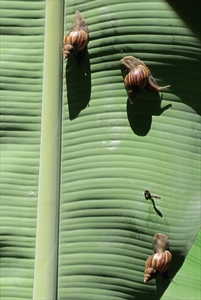- Worldwide distribution. GAS eats many vegetables, ornamentals and tree crops. An important pest.
- Feeds at night; by day, under stones, logs, and leaves.
- Eggs laid in batches (200-300) under soil and on logs.
- Spreads on slime from “foot”; long-distance spread by humans: eggs in pot plants, sawdust, vehicles, shipping containers, moved as pets. Carries the rat lung worm.
- Natural enemies: avoid predatory snails, flatworms, (a threat to local fauna); use Indian runner ducks.
- Cultural control: bare earth or sand, 1.5 m wide around plots; collect, boil 1h, feed to pigs; ducks; awareness programs.
- Chemical control: metaldehyde and methiocarb not recommended due to human and environmental concern








